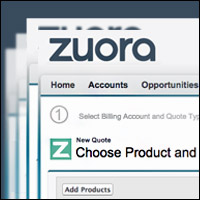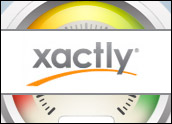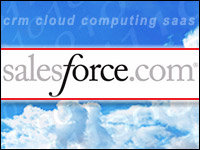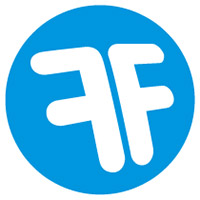
There is no better company to look at to get a sense of the future of technology in business and society than Zuora. This might surprise many people, because companies like Oracle, Microsoft and Salesforce might come to mind more readily. To one degree or another, those companies feature their products and services, which are very important, but Zuora talks about business models — and today, that’s even more important.
It’s the business model that will determine the products and services companies will be able to provide and its behaviors around them. It is the frame for everything else the company does and what it considers important. Consider the dominant business model of the last century: Manufacture millions of identical products, and sell them through mass advertising.
We took pride in the standardization and uniformity of so many products able to provide the identical user experience. That was a good thing, because it made interchangeable parts a reality. If you manufacture anything, that’s a big deal — but it leads to thinking that all customers are interchangeable too, and that’s not so good.
Z-Insights Zinger
The old model was simple and direct, but utterly without any meaning to the customer. Indeed, we came to think of the customer as a mere consumer — one who takes from a huge, but not unlimited, supply and gives nothing back.
A business model with consumers is unsustainable for the simple reason that sustainability demands that my spending is your revenue, and vice versa. It is a round trip, and it is what keeps economies strong. It is also the basis of Keynesian macro economic theory, which neoconservatives often pooh-pooh but never seem to refute.
Zuora’s messaging at Subscribed 2015, the user meeting it held last week in San Francisco, was that business models are changing. We already knew that, but perhaps we had a less clear understanding of its implications.
If you take personalization and customer experience, add to it my idea of customer science, and think of what the world’s business models might look like if they were to shift from mass production to personalized subscription, then you’ll get a sense of the vision Zuora’s CEO Tien Tzuo was offering.
Tzuo’s keynote was smooth and well organized but relatively quotidian for its first half, winding through nearly a decade’s worth of increasing progress in the subscription market.
In the second half, he wound up and delivered his big news: a 100-mile-an-hour fastball down the middle of the plate — a new product, Z-Insights. To simply call Z-Insights a “new product,” though, is to miss its importance. It extends the company’s idea of relationship business management (RBM), brings more definition to the subscription economy, and extends the future of ERP by moving it squarely into the front office. Let me briefly unpack this.
Relationship Business Management
The idea behind RBM is that to successfully transition from making millions of identical products to personalizing vendor-customer interactions, it helps a lot if you can provide your wares through subscriptions. Subscriptions provide the framework for capturing customer use and uptake data so that you can act authentically when involved in moments of truth with your customer.
Prior to Subscribed 2015, I felt that RBM was more aspirational, because it depended on vendors understanding — often guessing — what data to collect in order to act on its information content. There was a quality of dealing with “known unknowns,” to borrow a Rumsfeld phrase. With Z-Insights, there’s now a framework for all this, and the software will do a good deal of the heavy lifting when it debuts later this year.
Subscription Economy
Much as I believe we’re in a subscription economy, I also know that the economy has successfully spawned a culture. Customers behave in the market and act toward vendors like subscribers — not because all vendors offer subscriptions, but because nearly all customers have been exposed to subscriptions, to the ways they are superior to traditional relationships, and they prefer the new culture for its greater intimacy and empowerment.
Z-Insights aims to provide vendors with the information they need to understand customers better so that the two can meet in moments of truth. By collecting and managing customer use and uptake data, vendors will have solid understandings of what drives demand.
Understanding demand is the first step to providing adequate supply in a world that now requires greater personalization. It’s not enough to know that a customer might have a need for a solution unless one also knows how that solution will affect the user.
Enterprise Resource Planning
Much has been written (by me and many others) about the demise of ERP, but the context is important. I don’t see how to get away from ERP, since it supports so many vital back-office functions. However, the ERP we inherited from the last century is evaporating, in the sense that pieces that once were thought to be foundational are being supported in best-of-breed situations and connecting with front-office systems.
Take, for example, Xactly, which also had a user meeting this week at the other end of Market Street. Xactly focuses on incentive compensation, which once was thought to be a part of ERP through HR or HCM, but all of these functions are breaking off and aligning with the front office.
In a similar way, Zuora — as a part of ERP that handles subscription billing, payments and finance — is connecting more directly with front-office CRM when it begins offering insights into customer behavior from essentially ERP data, which can drive alignment of the sales, marketing and even support groups in the front office.
Who Owns the Customer?
Many good questions on the minds at Subscribed could be reduced to “who owns the customer in such a situation?” We seem to default to existing answers, like sales or marketing or possibly customer service, in these circumstances. Really, it’s a jump ball. If we’re changing the vendor-customer paradigm, is it necessarily true that the old structures will support the new framework? I suggest they won’t.
I believe Z-Insights is possibly the opening salvo in a process that may evolve a new department, at least in larger enterprises. I am calling it the “customer science department,” because it will be the place where all customer data consolidates, and vendors identify customer needs.
In essence, it will be the place where the business practices sociology on its customers, understanding the structures that keep them engaged with the group (and the business or brand), and looking out for the indicators of disenchantment that lead to attrition, as well as opportunities for cross-sells and upsells. This will drive specific directions for sales, marketing and service groups.
This framework will enable everyone to take responsibility for coordinating aspects of the customer journey, while a specific and neutral group has responsibility for customer knowledge. Note that ownership devolves into responsibility; its synonyms include “bond,” “duty” and “accountability.” As it should be.

























































